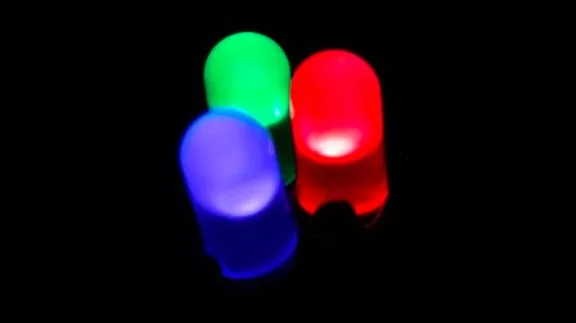The History of LEDs
Published
There’s been a lot of history behind the LED, from when it was first a random “huh” moment with a scientist up to now, where we have them surrounding us everywhere we go.
LEDs work on the basis of electroluminescence, which was discovered in 1907 by H. J. Round, who was working at Marconi Labs. Electroluminescence is what it’s called when a material emits a light when an electric current runs through it. When Round was using a crystal of silicon carbide, or carborundum, he ran a bit of current through it and it emitted a yellow light. It’s pretty crazy that this was before the Titanic sank and the Model T was being produced. Just as crazy is that absolutely nothing came of it.
It wasn’t until nearly 20 years later, a Russian named Oleg Vladimirovich Losev investigated this and before publishing a paper called “Luminous carborundum detector and detection effect and oscillations with crystals” in 1927. He is also credited with being the first person to intentionally create what we would consider an LED. With this amazing accomplishment and a paper under his belt, this promptly went absolutely nowhere. For awhile.
In 1936, 9 years after Losev published his paper, a scientist by the name of Georges Destriau, who worked with Madame Marie Curie, found that he could make zinc sulphide powder glow via electroluminescence when an alternating electrical field is applied. He would refer to this as Losev light, due to the research that Losev had performed. Interestingly, but completely unrelated to LEDs, Madame Curie was also researching luminescence at the time, but with radium instead.
Only 3 years later in 1939, Hungarians Zoltan Bay and György Szigeti patented a lighting device based on Silicon Carbide, and they mixed in some impurities to get various different colors. From this point, LEDs were still explored by different scientists but no serious progress was made until the early 1960’s.
In 1961, Gary Pittman and Bob Biard from Texas Instruments discovered that gallium-arsenide diodes emit infrared light when it conducts a current. The next year, Nick Holonyak (haulin-yak) Jr, who works at General Electric at the time, created the first actual LED that emits light in the visible spectrum of light, and, perhaps unsurprisingly, given how many of them you see in 1980’s sci-fi films, was red. Unlike the red LEDs we have now that are incredibly cheap, these LEDs were hundreds of dollars for about the first decade they were around. It wasn’t until the 1970’s when scientists at Fairchild Semiconductors used a different production methodology to reduce the cost from hundreds of dollars for an LED down to a couple of pennies, suddenly making them significantly more economically enticing. Before they dropped in price, though, a brighter red LED and a yellow LED were developed.
Now, brighter LEDs are great. With a lower price and higher brightness, they could start to take over in niche applications. For example, using long lasting LEDs in a stop light saves money on service costs and also means that one failed component doesn't render an entire light useless. The higher brightness and speed at which they can turn on and off also meant they could be used with fiber optics for telecommunications, at a time when fiber optics were starting to gain traction as well.
The next big milestone in LED development was in the development of a blue LED. While Shuji Nakamura of the Nichia Corporation made the first blue LED in 1979, it was much too expensive and not nearly bright enough to be used in commercial applications. Getting a blue LED, or any higher energy, shorter wavelength LED would have benefits beyond just being able to have a blue glow. Combined with red and green LEDs, you could finally create white light with LEDs, even if the light quality isn’t fantastic. Finally, LEDs became a viable replacement to incandescent and fluorescent bulbs.
Also, a shorter wavelength is what led to the Blu-Ray disc. As you may know with CD’s and DVDs, those operated with red light but the data densities on those discs were limited by the wavelength of the light. You couldn’t make smaller pits because you were getting to the point where the wavelength was longer than the pits that indicated 1’s or 0’s. With inexpensive, shorter wavelength LEDs, you could have commercial devices that can read discs with much greater density, hence - Blu-Rays.
These huge societal benefits are why Shuji Nakamura, along with Hiroshi Amano and Isamu Akasaki, won the 2014 Nobel Prize for finally figuring out how to make a high brightness blue / violet LED in the late 1980’s and early 1990’s. Since then, LEDs have been getting even cheaper, brighter, and more efficient. And there doesn’t seem to be any indication that we’ve hit the limit on any of those, so we should see even greater efficiencies, even brighter LEDs, and be even lower costs in the years to come.
And that is the history of LEDs - from their underwhelming beginning to the current explosion in every facet of our lives. If you’ve enjoyed this history, give this video a like and subscribe to our channel.
For more free tutorials on LEDs - check out what's inside an LED Bulb or how to select a resistor for a LED.

Get the latest tools and tutorials, fresh from the toaster.













